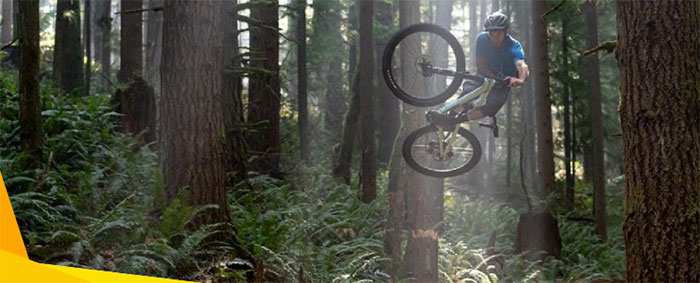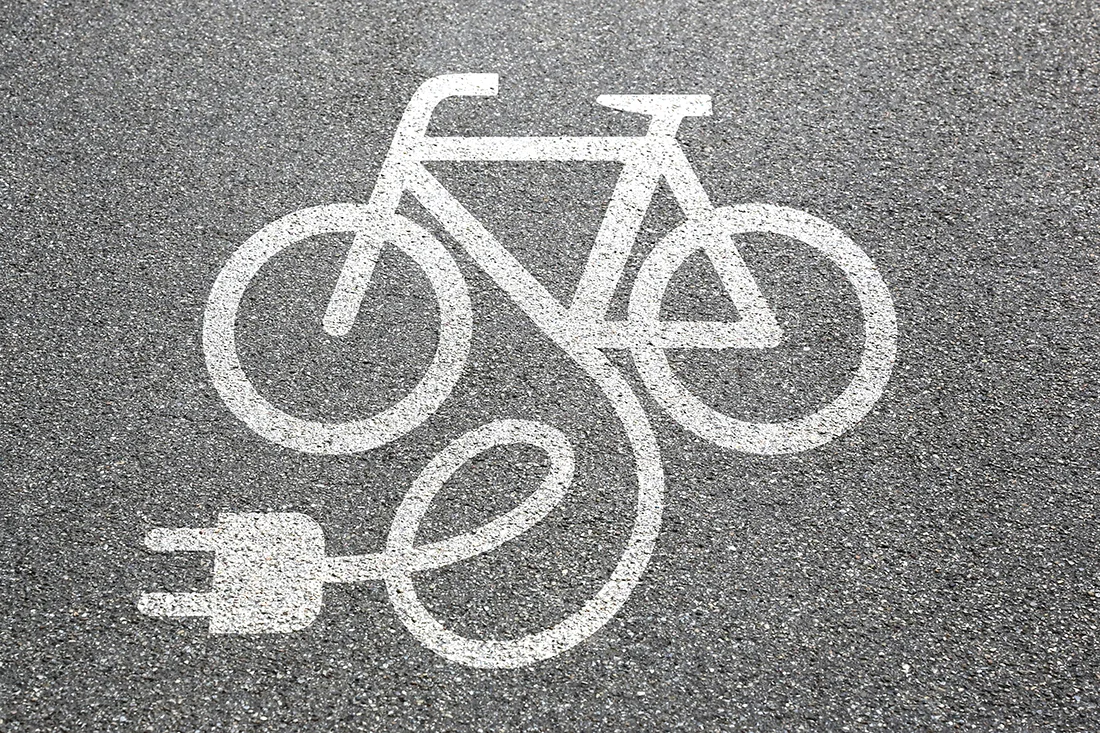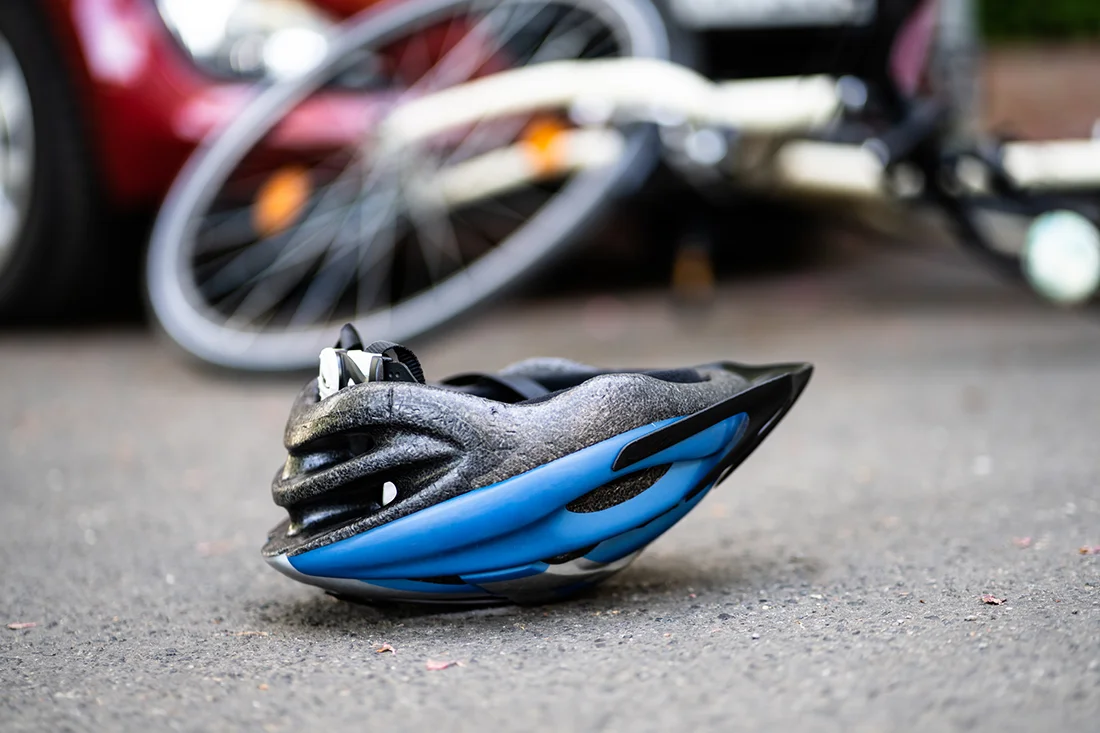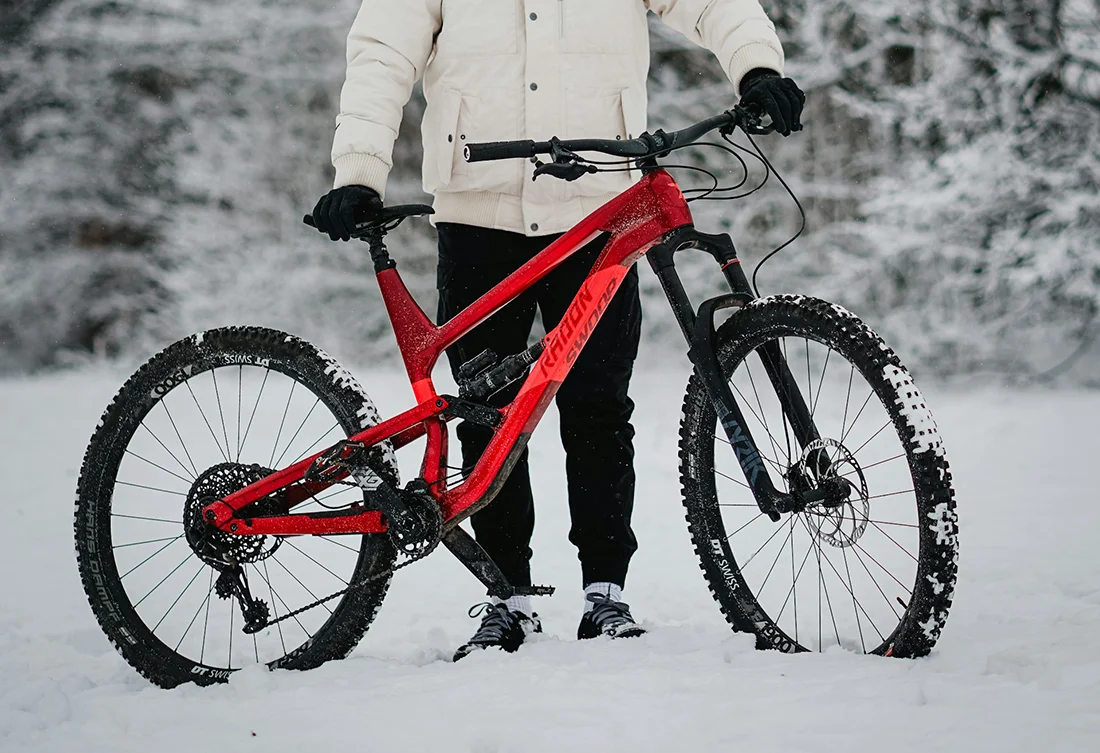Mountain bike suspension is one of those features that we sometimes take for granted. It can be easy to forget how much of a difference suspension makes, yet it is what separates good mountain bikes from bad mountain bikes.
But how does it really work? Most people don’t really know the mechanics behind it. It can be a tricky subject for a beginner.
In this guide, we’re going to take you into the world of mountain bike suspension.
What Does Suspension Do?
You probably understand that suspension has to do with some kind of compression. We see suspension systems on far more than mountain bikes alone. You can find these systems on everyday vehicles, motorcycles, trucks, buses, and even airplanes.
Suspension compresses under heavy load, dampening the impact from a landing, or the nature of rough terrain. Mountain bike suspension creates a smoother ride by compressing and rebounding.
A mountain bike with front fork suspension only is called a hardtail. A mountain bike with both front fork and rear shock suspension is called a full-suspension, or dual suspension.
Hardtails are generally lighter, more affordable, and easier to maintain than full suspension mountain bikes, though they are not equipped to handle all kinds of mountain bike terrain. Instead, hardtails are designed for smooth single-track or double-track, as well as paved or fire roads. They are great for hill climbing and variable-terrain rides such as those with mixed paved-dirt sections.
Full suspension mountain bikes are significantly heavier, more expensive, and more difficult to maintain than hardtails. Although there’s no denying — they are much more capable.
These bikes can handle rough trails and bounce over roots, rocks, and jumps without a problem. Full suspension mountain bikes are designed for the gnarliest trails and steepest downhills.
Their front and rear suspension systems make the ride much more comfortable overall. So, these bikes are best for harder rides on rough trails, beginner mountain bikers, and high-speed descents.
It is interesting to note that most mountain bike manufacturers don’t make their own suspension systems. Instead, they enlist the help of suspension manufacturers such as Fox, RockShox, SR Suntour, and DT Swiss.
Many mountain bikes come in 3 to 5 different models which include different specs and components. Differing suspension systems are part of these differences.
How Does Suspension Work?
Suspension comes into action when your tire makes contact with an object or the ground, with a force strong enough to force it to compress towards the bike.
On a bike without suspension, this force would be transmitted straight through the tire, up into the wheel, through the fork, and into the frame and handlebars where you would feel the impact directly through your hands.
What changes with suspension is that this force isn’t transmitted to your hands. It rather goes into the suspension system itself through forced compression.
After contacting an object such as a root jutting out from the trail, the front suspension compresses, which means that the stanchions move through the sliders, the force is distributed through the suspension, and then the suspension rebounds to its original position.
Rear suspension systems, also known as rear shocks, work in the same way as front fork suspension systems, but with different parts.
Front Suspension
Front suspension on a mountain bike will always go through the fork, which is the separate piece of the bike that attaches your frame to the front wheel. The fork is what wraps around the front wheel, it houses the brakes, as well as the suspension system.
Sticking out the top of the fork is the steerer tube which is where the fork attaches to the frame, and below that is the crown of the fork, which is where the two fork legs splay out around the wheel. Next are the stanchion legs or upper legs, which slide down into the fork’s lower legs, conveniently called the slider.
This is the heart of the front fork suspension system, the parts that actually compress and slide against each other under load.
If you look closely at the top of the slider, you will see the seals, garter springs, and bushings inside the sliders.
At the bottom of the lower legs are the dropouts, that hold the axle of the wheel which is most commonly a thru-axle system designed for disc brakes. This is the part of the fork that actually attaches to the front wheel, holding it in place.
There are also brake mounts on this bottom part of the fork. Larger forks (with heftier suspension systems) can handle larger brake rotors. Smaller cross-country fork will pair with smaller disc brakes rotors. Larger downhill fork can take on big disc brakes, such as those with 200mm rotors.
Related: Jenson USA’s Suspension Service
Suspension systems are designed to compress, and that’s why the front fork suspension involves the upper and lower legs, or the stanchion legs and sliders.
When fully compressed, the stanchions will be able to move a certain distance into the sliders – this distance is called travel.
More movement means more travel, and more travel means greater cushioning under compression and impact. Thus, basic suspension systems, such as those on hybrids and kids’ bikes have little travel. All-mountain and trail bikes have the most travel.
Travel Distance
- 30-50mm – Kids’ bikes
- 60-80mm – 24″ kids’ bikes, hybrids
- 100-120mm – XC mountain bikes, trail mountain bikes
- 120-160mm – All-terrain mountain bikes
- 180-200mm – Downhill mountain bikes
Some mountain bikes have adjustable travel. That means you can increase or decrease the amount of front fork travel while riding. Shortening the travel is best for long flat sections or uphill climbs, whereas lengthening the travel is best for rough terrain or steep descents.
Front fork lockout is a setting that allows you to stop the suspension travel, or effectively ‘turn off’ your front suspension. Mountain bikes with this capability typically have a lever on top of one of the front fork stanchions so that you can flip the switch while riding. Most riders use this feature on long sections of smooth road, or pavement sectors.
There are a few other fork adjustments that can be made, including preload, damping, and air pressure.
Preload is an adjustment that allows you to increase or decrease the tension on the spring in a coil-sprung fork. This means that you can decrease the preload if the fork feels stiff, or increase the preload if the fork feels too bouncy.
Damping is often called tuning the fork. It involves adjustments to the compression and rebound speed of the front fork suspension. Compression refers to how fast the suspension absorbs an impact and compresses. At the same time, rebound is the speed at which the fork re-extends following compression (back to its original position).
Finally, there is air pressure adjustment, which is a ‘shock pump’ adjustment to an air-sprung fork using a valve on the stanchion or slider. It if effectively the ‘preload’ adjustment but to an air-sprung fork rather than a coil-sprung fork.
Rear Suspension
The rear suspension is also known as ‘rear shock,’ or just ‘shock’ for short. This piece of suspension acts as the compression area for the rear wheel. Just like the front fork suspension compresses the front wheel. It also helps the rear wheel stay in contact with the ground. Even over the roughest terrain, increasing overall control and creating a smoother ride.
Unlike the front fork suspension which is almost integrated into the bike’s frame, the rear shock is held within the bike’s main frame triangle.
One end of the shock attaches to the main triangle and one attaches to the rear triangle. This allows the rear shock to pivot and compress under load. Different frame manufacturers house their rear shocks in different positions and configurations.
Just like front suspension, rear suspension will be made of either a coil spring or air spring, with coil springs being most common on downhill bikes with the most suspension travel capable of handling the largest jumps and harshest terrain.
Stroke travel refers to the distance that the rear shock compresses, just like front fork travel in front suspension. Rear shocks sometimes have less travel than front forks, but only marginally. Long-travel downhill mountain bikes, for example, often have 150-170mm of stroke travel with 180-200mm of front fork travel.
Many mountain bikes have the same amount of front and rear travel, with short-travel mountain bikes (e.g. Cross-country) having 100-120mm of front and rear travel, and long-travel mountain bikes (e.g. Downhill) having 140-160mm of front and rear travel.
Coil Spring Suspension
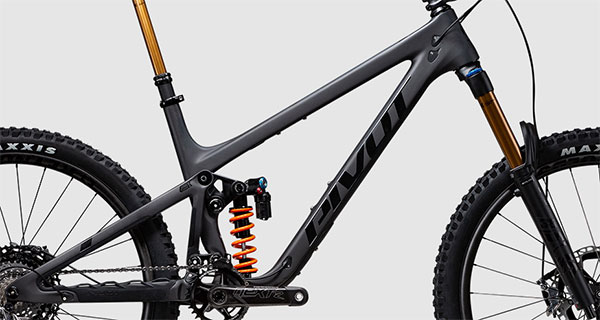
The name for coil spring suspension comes from the wound steel coil to control the compression and rebound. Like any other coil, this piece of carefully-crafted metal will return to its uncoiled state after being compressed, providing a natural rebound, but one that cannot be significantly adjusted.
This suspension system provides a linear or constant compression rate, rather than a progressive compression rate provided by an air spring. Coil springs provide smooth and consistent travel compression and vary between frame sizes and rider sizes. They are fairly easy to replace in case the stock coil spring isn’t working for you.
Air Spring Suspension
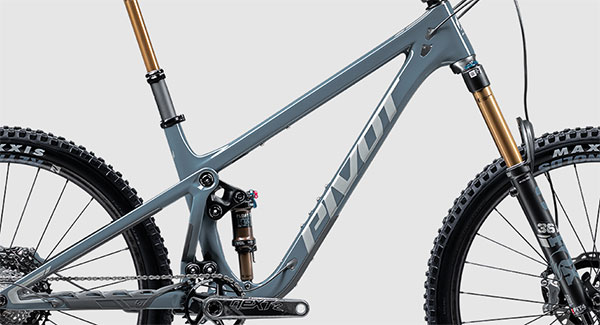
Air springs use pressurized air in a chamber to provide suspension through the front fork, and a progressive compression rate rather than linear. This means that the compression is softer at the beginning of the travel movement and tighter as more pressure and compression is applied.
There are a few main differences between coil spring and air spring suspension: performance, reliability, and adjustability.
Coil springs are good performers but less adjustable, while air springs are better performing overall, with more adjustability and lighter weight. However, coil springs are extremely reliable whereas air springs are less so.
However, the biggest difference between front fork suspension is not the type of spring (coil versus air), but rather the material, design, and cost of the fork. An expensive coil spring will always be better than a cheap air spring, and vice versa.
Rear suspension is much the same, with both coil and air spring versions available. These systems are also adjustable and come in many different makes and styles. Before getting into the rear suspension, let’s take a closer look at front suspension on mountain bikes.
How to Choose Suspension
When it first comes to choosing suspension, you need to know the terrain that you are going to tackle.
If you are only riding on paved roads, then you will be comfortable on a road bike with no suspension.
But if you enjoy city riding which occasionally takes you across beaten-up pavement and potholes, then a hybrid with front suspension will be a much better option.
Mountain bikes will almost always have suspension, with the exceptions being older frames and basic kids’ bikes.
Other than that, every modern mountain bike will at least have front suspension. These are called hardtails, and these are lighter mountain bikes that are certainly designed for off-road riding, but not the gnarliest of trails.
Hardtails
Hardtails are best for basic mountain bike trails, smooth dirt or gravel, double-track, and fire roads.
You can also use a hardtail for mixed-terrain rides, such as a commute that is part pavement and part dirt. These bikes are typically lighter than full suspension mountain bikes, so they are better for climbing. However, they are not always as comfortable as full suspension mountain bikes because of the…hard tails.
Lastly, hardtails are typically cheaper and easier to maintain than full-suspension mountain bikes. That’s what makes them a better choice for beginner mountain bikers.
You can find entry-level hardtail mountain bikes for $500-$1,000. High-end race models with carbon fiber frames and top-of-the-line components will cost $5,000-$7,000.
Full-Suspension
Full suspension mountain bikes are for experienced off-road riders who want to take their riding to the next level. These bikes are designed for handling steep, rough, and technical trails, including switchback descents, gaps, and jumps. Full suspension will help cushion impacts from all kinds of terrain, and lead to a more comfortable ride overall.
However, full-suspension mountain bikes are typically heavier and more expensive than hardtails, as well as being more difficult to maintain.
This is why full suspension mountain bikes are better for more experienced mountain bikers, and those who are willing to invest in a big upgrade to their off-road setup. Full suspension mountain bikes are not as good for climbing as compared to hardtails. But they will go downhill faster than any other bike.
By comparison, full-suspension mountain bikes can cost nearly twice as much as hardtail mountain bikes. An entry-level full suspension mountain bike will cost $1,000-$2,000, while the high-end race frames can cost $7,000-$10,000. Full suspension mountain bikes are quite the investment.
For the gnarliest trails, steepest descents, and biggest gaps, there is nothing better than a full-suspension mountain bike.
Best Full Suspension Mountain Bikes
FAQ
What is the good suspension for a mountain bike?
Good suspension systems have to do with the material, manufacturer, and design of the suspension rather than the type or its capabilities. You also need a suspension system that matches the terrain, so a good suspension system is one that does what you need it to do. If you are an experienced downhill rider, then you a full suspension mountain bike will be a good setup for you. But if you are a beginner mountain biker who wants to try some tame trails and soft fire roads, then a hardtail mountain bike will be a good setup.
Do you need suspension on a mountain bike?
While you don’t necessarily need suspension on a mountain bike, suspension makes everything better. Suspension is necessary for cushioning, comfort, traction, and capabilities on all sorts of mountain biking terrain. So while you could certainly survive a mountain bike trail without suspension, you will end up with sore shoulders, a slow time, and probably crash a couple of times. Suspension makes mountain biking faster, safer, and much more fun.
What are the types of mountain bike suspension?
There are two main types of mountain bike suspension: front suspension and rear suspension. Front suspension is also known as front fork suspension because it is built into the fork of the frame, whereas rear suspension is also called the rear shock, and is built separately from the rear triangle but is housed inside the bike’s main triangle.
Mountain bikes with front suspension only are called hardtails, while mountain bikes with both front and rear suspension are called full suspension or dual suspension mountain bikes. There are no bikes with rear suspension only.
Is suspension on a bike worth it?
Suspension is always worth having on mountain bikes. As for other types of bikes, you don’t always need suspension because it adds weight and cost, and it is an extra piece of your bike to maintain. You don’t necessarily need suspension on a gravel bike or a hybrid, but it could certainly be nice to have if the terrain is rough enough.
Suspension improves comfort, confidence, and traction on all sorts of terrain, especially gnarly off-road trails and steep descents. If that sounds like terrain that you tackle, then suspension is 100% worth it.
Are hardtails faster than full suspension?
In general, hardtails are faster than full suspension mountain bikes on relatively smooth trails and terrain. This is because hardtails save weight by forgoing rear suspension, and their front fork suspensions are typically lighter as well. This allows you to climb and ride faster on a hardtail, but only if the terrain is relatively terrain. If the trails are steep and technical, then you will be losing much more traction and confidence in the corners compared to a full-suspension mountain bike.
What are hardtails good for?
Hardtails are great for smooth dirt roads, fire roads, gravel, double-track, and off-road climb. Compared to full suspension mountain bikes, hardtails are significantly lighter, though they are less comfortable and capable on rough terrain. So if you are a beginner mountain bike rider or you want to explore some relatively tame trails, a hardtail mountain bike is the lighter and cheaper option that will be perfect for you.
Do I really need full suspension?
Full suspension mountain bikes are designed to handle rough trails, steep descents, gnarly switchbacks, jumps, and bumpy off-road terrain. This is usually reserved for experienced mountain bikers looking to push their limits on technical trails. So if this sounds appealing to you, then you need a full-suspension mountain bike. But if this terrain sounds intimidating or completely new to you, then you can stick to the quieter and softer trails on a hardtail.

